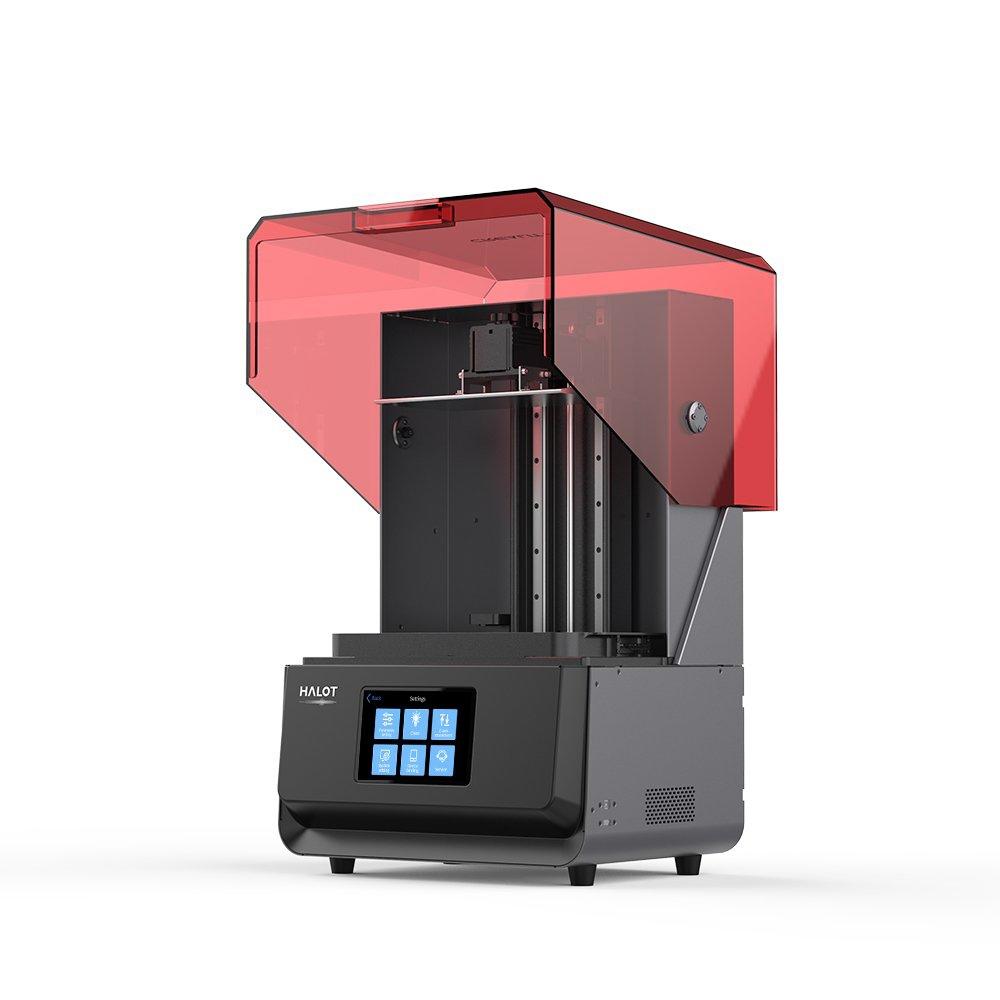Compare Ender 3 vs Halot Max
Comparison between the best 3D printers
Choose the best 3D printer at the best price. The cheapest 3D printers are here.
Buy a 3D printer here with 3D Fila.
 |
 |
|
| Model | Ender 3[BUY Ender 3] |
Halot Max[BUY Halot Max] |
| Printing Material | Filament | Resin |
| Buy Filament for Creality 3D Ender 3 | Buy Resin forCreality 3D Halot Max | |
| Estimated price | $210,00 | $3000,00 |
| Manufacturer | Creality 3D | Creality 3D |
| Release Year | 2018 | 2021 |
| Print Volume [mm] | 220x220x250 | 293x165x300 |
| Printer Size [mm] | 440x440x465 | 480x387x770 |
| Weight [kg] | 6,62 | 32,5 |
| Power Loss Recovery | NO | NO |
| Maximum Resolution [mm] | 0,1 | 0,03 |
| Processor | 8 bits | |
| Display | Mono | Display touchscreen 5'' |
| Power Supply | 24V / 270W | |
| Connectivity | SD / USB | SD / USB / Wi-Fi |
| Operating systems | Windows, Mac, Linux | Windows, Mac, Linux |
| Date of registration in the system | 2021-04-13 | 2022-11-04 |
| Release date | 2018 | 2021 |
| Extra features | The Ender 3 V1 is a DIY assembly 3D printer, a sales leader since 2017, standing out for its cost-benefit. With a wide printing capacity, it has a CNC machined structure for precision and stability. It offers high-precision prints with low noise, thanks to its innovative V-profile and pulleys. It has a self-adhesive magnetic platform for easy removal of models and excellent adhesion. The Ender 3 heats up quickly, reaching 100°C in 5 minutes, ideal for agile prints. It includes protection against power failures, allowing you to resume printing after interruptions, saving time and material. | The Halot Max printer stands out for its large print size (293 x 165 x 300 mm) and uses SLA technology. It has an integral light source for improved accuracy and a strong core with an advanced operating system. Its Z-axis module ensures high precision, supported by efficient slicing software. The machine offers online OTA updates and boasts an adjustable layer thickness between 10 and 200 microns. Its XY-axis resolution is 3840*2160, with 0.05 mm accuracy, and an integral 405nm light source. The printer includes a 5" touchscreen and multiple connectivity options, such as USB, Creality Cloud, and HALOT BOX WiFi. With cutting-edge technology, the Halot Max is ideal for printing small models with uniform precision, thanks to its self-developed lighting system and stable printing mechanism, which includes dual linear guides, ball screws, and an intelligent brake system. |
| Support for multiple colors and materials (AMS and CFS) | NO | NO |
Notes * |
||
| Cost-benefit | 6 / 10 | 5 / 10 |
| Hardware | 0.5 / 10 | 1 / 10 |
| Tela | . | . |
| Print volume | 3 / 10 | 3 / 10 |
| Performance | 1 / 10 | 9 / 10 |
| [BUY Ender 3] | [BUY Halot Max] |
Conclusion |
| In comparing the Ender 3 and the Halot Max 3D printers, it becomes clear that each model serves different needs and target audiences within the 3D printing ecosystem. The Ender 3 is a well-regarded entry-level printer, favored for its cost-effectiveness and impressive printing capabilities relative to its price. Its user-friendly design, DIY assembly approach, and solid performance make it appealing for hobbyists and individuals new to 3D printing. The Ender 3 excels in creating high-precision models and is particularly known for its reliability and low operational noise. Although it has a smaller print volume and offers limited features compared to the Halot Max, its ability to deliver excellent prints at an affordable price remains a major highlight. On the other hand, the Halot Max represents a high-end option and is engineered for serious users who require precision and efficiency in 3D printing. With its larger print volume, SLA technology, and significantly higher layer resolution, the Halot Max is designed for detailed and complex prints, making it a strong choice for professional applications or industries where print quality is paramount. Its advanced connectivity options and features further enhance its usability, but these come at a significantly higher price point. In conclusion, the choice between the Ender 3 and Halot Max hinges primarily on budget and intended use. The Ender 3 provides excellent value for beginners and casual users, while the Halot Max caters to professionals seeking state-of-the-art technology and superior print quality. Users should carefully consider their specific needs and how much they are willing to invest to determine which 3D printer aligns better with their requirements. |

